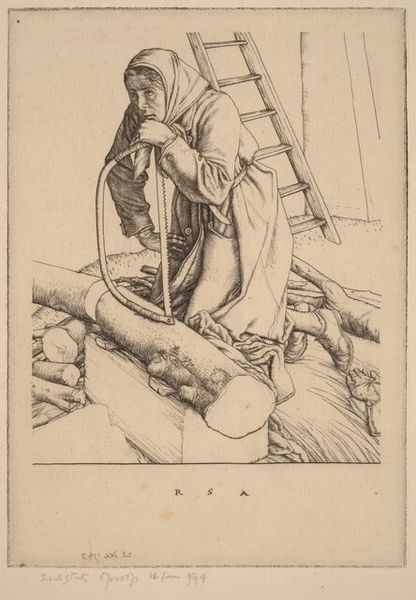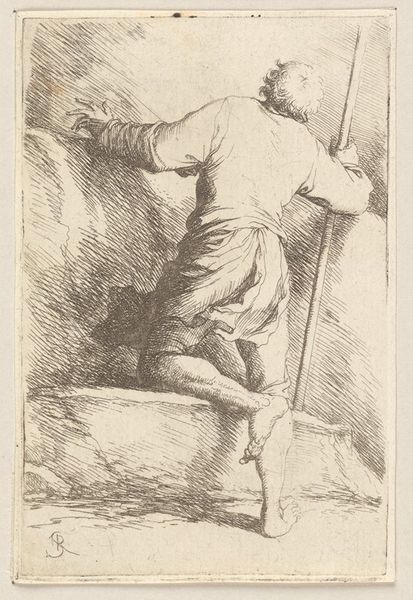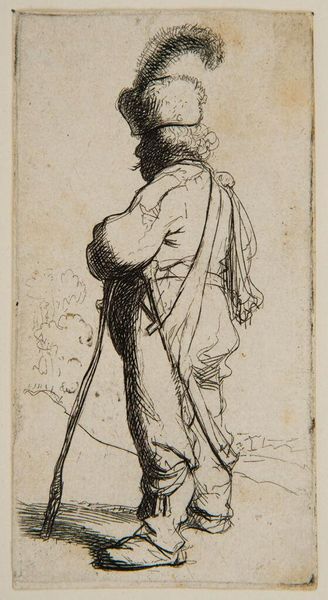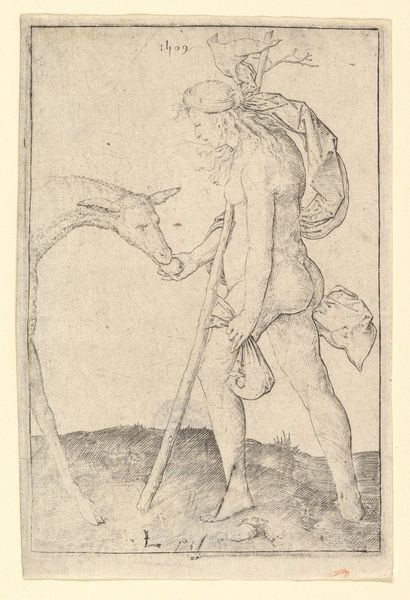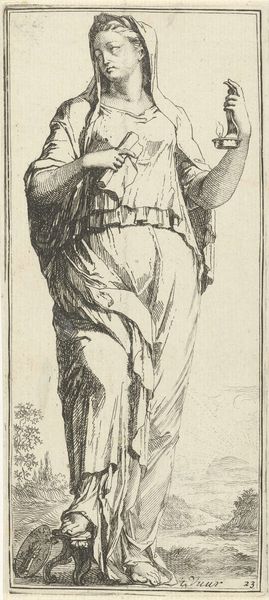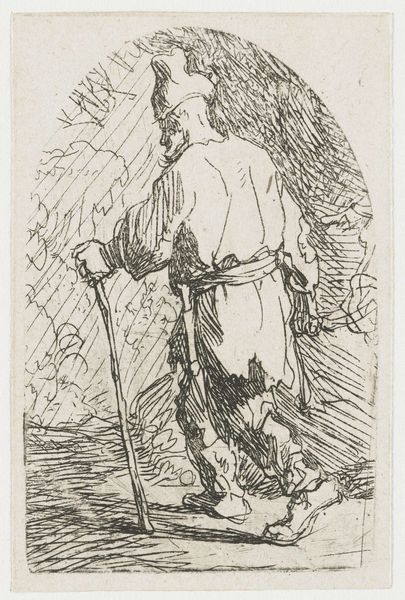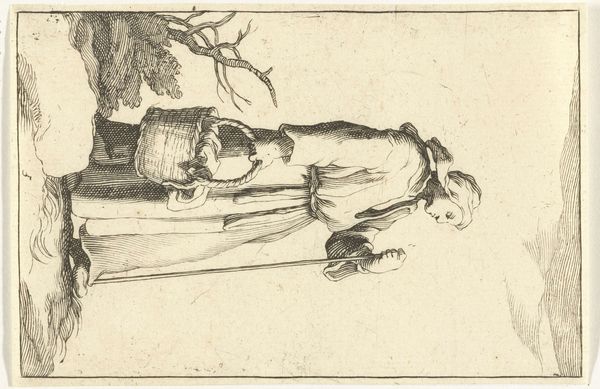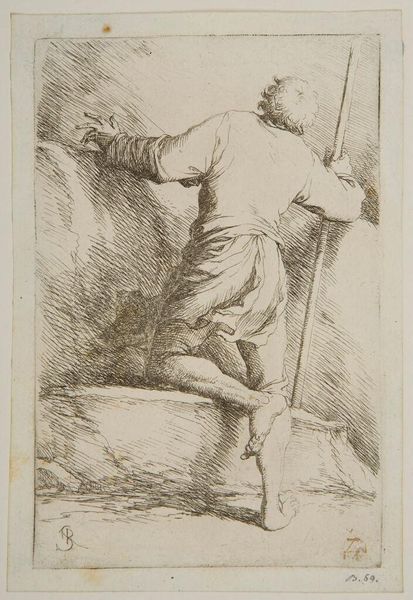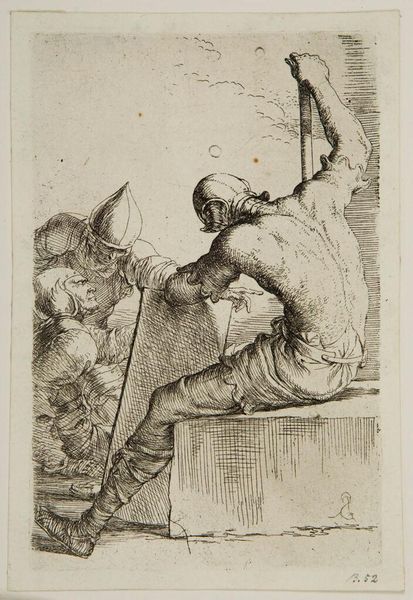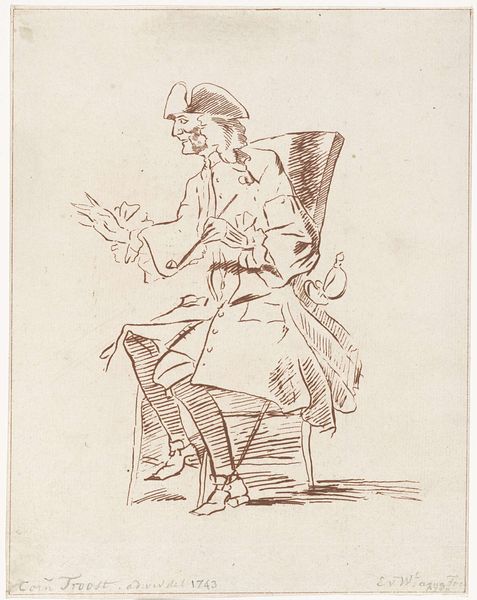
drawing, print, etching
#
drawing
#
ink drawing
# print
#
etching
#
landscape
#
figuration
#
academic-art
#
realism
Dimensions: plate: 14.7 × 11.8 cm (5 13/16 × 4 5/8 in.) sheet: 22.9 × 17.3 cm (9 × 6 13/16 in.)
Copyright: National Gallery of Art: CC0 1.0
Curator: Here we have Robert Austin’s 1932 etching, "Man with a Scythe." Austin, known for his detailed realism, presents a striking figure amidst a rural scene. What are your initial thoughts on this print? Editor: The detail is quite striking; all those etched lines certainly evoke the textures of hay, cloth, and weathered skin. It's heavy, though. There's a laboriousness to the image that translates directly from the depicted work. Curator: That weightiness speaks, I think, to the social context. The 1930s were a time of immense agricultural upheaval. Austin's choice to depict this solitary figure engaged in manual labor positions him within a broader narrative of rural hardship and the dignity of work, while also playing into idealised pastoral fantasies in contrast with rapid industrialisation. Editor: Right, that tension interests me. We see this idealized representation, yet etching itself involves physical labor and specialized tools; a material dance mirroring the image’s content. How did Austin’s prints reach their audience at the time? Was this kind of detailed print work a luxury item, or more widely accessible? Curator: Austin had a wide reach. As a teacher at the Royal College of Art, his aesthetic heavily influenced a generation of printmakers, further popularizing printmaking itself, which then enabled a wider circulation of images than painting alone could have at the time. So in a way, through distribution, it democratised images. Editor: Interesting. This connects to how value is ascribed; skill, labor, visibility... And even today, looking at the reproduction, the precision is impressive. It begs the question: does the material value reside in Austin's hand and vision, or also in the process? Curator: It is the combination, isn't it? It portrays rural life with a nod towards an almost classical composure of the figure that elevates the working class to a level of heroic grace. It highlights, in many ways, the idealized versus the lived realities of early 20th century agricultural labor. Editor: It's a potent image that gets you pondering the real cost of things. I mean the sheer physical effort it portrays makes you think about where value is found in materials. Curator: A lasting image that gives form to so many complex considerations. Editor: Absolutely, it stays with you.
Comments
No comments
Be the first to comment and join the conversation on the ultimate creative platform.
